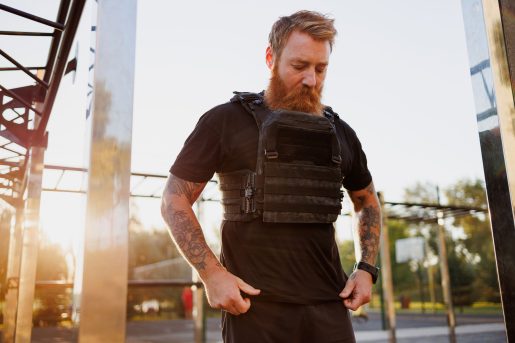Weight a minute: Should you add a weighted vest to your workout?
Weighted vests are popular tools to add to different workouts. They help build strength and endurance and help to burn calories, but not everyone needs them. Find out if wearing a weighted vest is right for your fitness level.
 “You can use a weighted vest for strength workouts to make them harder and higher intensity, or you can use it if you’re going on a walk or run, which lets you burn more calories and improve your cardiovascular endurance due to the higher intensity,” said Melanie McNeal, physical and occupational therapy manager at Baylor College of Medicine.
“You can use a weighted vest for strength workouts to make them harder and higher intensity, or you can use it if you’re going on a walk or run, which lets you burn more calories and improve your cardiovascular endurance due to the higher intensity,” said Melanie McNeal, physical and occupational therapy manager at Baylor College of Medicine.
Weighted vests can be added to various exercises, including bodyweight exercises like squats and pushups. The vest adds more intensity and makes the workout a challenge, while also giving you a hands-free option for weight if you prefer to not hold dumbbells. Wearing a weighted vest during workouts where you bend at the waist allows you to strengthen the back muscles and work on the postural muscles to help build strength. These exercises include lunges, pullups, dips, good mornings and deadlifts. McNeal also suggests wearing a weighted vest to better prepare you for a difficult exercise, such as training for a hike in the mountains when you live in a flat city. To make the intensity harder, walk your normal route with the added weighted vest.
Most people can do a proper, high-intensity strength or cardio workout with just body weight. While a weighted vest might not be necessary, the need for one depends on fitness level.
“People who are really strong, workout a lot and can do multiple pull-ups with ease may use a vest to increase strength by increasing the intensity of the pullups. Most people cannot do multiple bodyweight pullups, so they don’t need the weighted vest,” McNeal said. “It just depends on if you need the added resistance.”
Weighted vests are offered in a variety of sizes, typically starting at around six pounds. Some come with different weight packs to let people adjust the weight of the vest. McNeal recommends starting small and working your way up.
“It doesn’t take much weight to make a huge difference. You’re putting more stress on the back, core and legs, and you have to get used to that first. Then, you can add more from there.”
Make sure the vests sits snug but does not cut off circulation. When you move around, it should not move with you. It should feel like a compression or tight-fitting shirt.
If you are overweight, avoid wearing a weighted vest during workouts; the extra weight adds stress on the joints. People with arthritis in the hips or knees should also skip the weighted vest. Those with low back injuries should not add weight or put extra stress on the low back. Weighted vests can worsen these injuries.
“If you’re doing an exercise and that added weight causes you to have poor mechanics or not be able to maintain correct posture while doing the exercise, then it’s not appropriate,” McNeal said. “Start small and build up. Baby steps is key.”
Learn more about Baylor Medicine Orthopedics and Sports Medicine.
By Homa Warren



